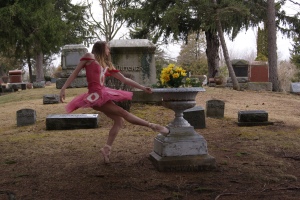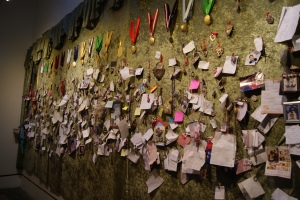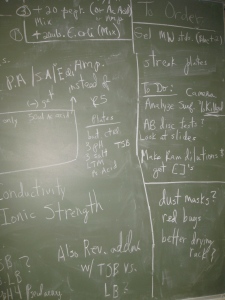Workhorse Prose
Workhorse prose–writing crafted to do a job–represents some of the most transient of documents. It serves a purpose, then disappears–typically into a file drawer, a recycle bin, or paper shredder. However, even the most duty-oriented documents hold the potential for creative handling.
In appreciation of this largely unsung prose and all of its hard work, on each of the next seven days, I will post different forms of workhorse prose and links to examples and resources.
Thank you for stopping by!
Day Seven of Seven
Workhorse Prose Takes a Leap
Solid, clear, reliable–workhorse prose put to good use in journaling or casually recording life’s events, observations, and random encounters can make a perfect jumping point for creative work. Life’s notes don’t have to be pretty, but getting them down accurately as a “what, who, where, when, why, and how” can provide invaluable raw material for fiction, creative nonfiction, and poetry….at least that’s what I’ve discovered:)
Thanks for stopping by this week. Happy writing!
Workhorse Prose Day Six of Seven
The Obituary
It might be perceived as one of the grimmest of written forms, but the obituary has evolved, becoming more open to creativity. Some individuals are unwilling to leave this document for others to write; rather, they are seizing the opportunity to author their own. Despite the sad and solemn circumstances, some obituaries read like mini-memoirs; others are celebrations of life filled with gratitude, personality, and even humor. Here are a few examples of unforgettable obits:
The brave characters in John Green’s The Fault in Our Stars gather for Gus’s Eulogy before he dies.
The Fault in Our Stars
The auto-obituary of “Ask Jane” columnist Jane Catherine Lotter
The form of the obituary is applied to a non-human subject in Rex Huppke’s humorous piece in the Chicago Tribune: Facts, 360 B.C.-A.D. 2012
Workhorse Prose Day Five of Seven
The Complaint Letter
 Complaint letter writers are often moved to draft such a document when they are angry. However, this form of workhorse prose might well be most effective when crafted with humor, says expert complaint craftsman Anthony Matthews. Check out the NPR piece:
Complaint letter writers are often moved to draft such a document when they are angry. However, this form of workhorse prose might well be most effective when crafted with humor, says expert complaint craftsman Anthony Matthews. Check out the NPR piece:
Customer Dissatisfaction: The Fine Art of the Funny Complaint
Here’s a great example of an effective (and humorous) letter of complaint about airline food:
Dear Customer Relations
Day Four of Seven
Letters Working to do Good
Many of us hope our writing will improve lives, right a wrong, or even change the world. Whether it’s a single letter or a full-blown writing campaign–letters meant to make a difference depend on clear, succinct, workhorse prose. Here are a few examples of letter-writing efforts to bring about change:
Amnesty International’s Write for Rights 2014 Letter Writing Campaign is a powerful example of letters that have helped advocate for human rights and that have dramatically changed lives.
A Write it Forward Campaign
On a smaller scale, a Massachusetts psychology class set out to determine how handwritten letters of gratitude and appreciation might make a difference in the lives of others.
The American Medical Student Association supports activism among its members by offering a letter-writing campaign/activism toolkit complete with guidelines for drafting letters to address healthcare issues.
Please share any other resources/success stories with a reply post!
Day Three of Seven
Got Opinions?
The OpEd relies heavily on workhorse prose. Though its shelf life might be brief, a well-written opinion piece can give rise to change. Here are a couple of resources that might prove useful in crafting your own opinions:
- Track daily opinions in major newspapers at The Daily OpEd
- The Op Ed Project aims to increase the range of voices and quality of ideas expressed in the world. The site also offers information on writing opinion pieces and submitting to specific markets.
DAY Two of Seven
Workhorse prose supports education
The syllabus–its life is brief but intense. It serves as a course roadmap
for students who depend on it to guide them with precision and clarity.
Though the syllabus is a duty-oriented document, some creative educators have managed to elevate them to an art form. Follow the link below to enjoy some interesting examples, such as the syllabi for David Foster Wallace’s English 102 and Zadie Smith’s 2009 writing course:
Day One of Seven
Great Grants
Those who benefit the most may never read a word of it, and some consider it among the dullest forms of writing: the grant proposal. One of the more common examples of “workhorse prose,” grant proposals demand clarity and specificity; yet they leave room for creativity. To describe a need is to tell a story–a true story that, well told, has the great potential to change lives in countless ways, including programs that aim to:
improve health
create new educational programs
bring critical services to the underserved
provide clean water, food, and shelter
promote social justice
save endangered species
promote peace
Putting a face on a grant proposal–describing who will benefit from the support and how–can help make the case for grant support.
Below are a few examples of successful proposals that demonstrate just some ways the workhorse prose of a grant proposal benefits individuals and communities on local, national, and international levels.
A Low Income Wind Power Project
A Breast Cancer Awareness Program
A Colorado-base education and intervention program
Reach for the Stars: a science education program for underserved children








“To describe a need is to tell a story” — thank you for that critical reminder!
LikeLiked by 2 people
Reverberated for me: “a true story that, well told, has the great potential to change lives.” Isn’t that something we have in common? I also found your resources helpful as they lessened grant writing’s very intimidating nature by providing examples with 20 pages and some with a little as 8. Thank you.
LikeLiked by 1 person
Thanks so much for your comments. I’m a fan of the three-page letter proposal. But of course, the first stop in proposal writing is the foundation/prospective funder’s guidelines!
LikeLiked by 1 person
Those are some serious reading lists on some of those syllabi. I haven’t even heard of a lot of those books. Melanie’s probably read them all, though.
LikeLiked by 2 people
Love the poetry excerpts of Stein in Susan Howe’s syllabus – “anything artificial is an annoyance example artificial silk.=All history is cautious.” And of course, LOVE the cookie policy in Lily Hoang’s Fiction MFA course description.
LikeLiked by 1 person
And may I suggest Times Video’s Op-docs like “A Ride Home from Prison” or “Who Sounds Gay?”
http://www.nytimes.com/video/op-ed
LikeLiked by 1 person
Thanks so much! The Op Docs are great!
LikeLike
Pingback: Plenum – Creative Writing and a Sustainable Income Can go Hand in Hand | Ponikaa Girl
Love the Tool Kit in the Amnesty International post. Thorough and no re-inventing the wheel. Great resource!
LikeLiked by 1 person
I love the picture on the Obituary installment. Gives a whole new meaning to “I’ll dance on your grave.”
LikeLiked by 1 person
Thanks, Susan!
LikeLiked by 1 person
Thanks, Susan. A Fault in the Stars made me tear up a bit there. These are all “real world” and “applicable” reminders that, indeed, we are artists and we are useful!
LikeLike
Thank you for these links, so much information available on the internet. All of these stimulated thought process for me, and possible future projects. Don’t you wish that the internet was free for everyone in this world! No data charges – just link in ….
The two link paths that caught my attention quickly were:
Write for rights, the sample letters link
Click to access 2014WriteForRightsSampleLetters.pdf
I started to look at the letters and immediately felt that these issues are everywhere. I wanted to rewrite the first letter and make it stronger, then I realized that this letter and all of the letters were very strong. Because, anyone could use them as examples and anyone can write a letter of issue and make a difference and help stop human rights violations.
The Op Ed Project. I was immediately curious about the Echoing Green logo and went to their website – http://www.echoinggreen.org
The logo did not take me directly to the Echoing Green website so I looked it up and clicked on it. In my mind I thought this would be soothing yet political in visual content, because of the beauty of the name and the colors in the logo. But, when their website opened up I found it so irritating that I will clicked it off. Then, I went back to find out more about it and I still found it difficult to read because of the stimulation that irritated me. It is interesting how I reacted when I was first opened this “green” website. I had a preconceived notion. I think the group is out to do good, it was just hard for me to read, so I did not stick with it. This was a good lesson for me as a writer – how do audiences get my message / verses how do I want them to get my message?
LikeLike